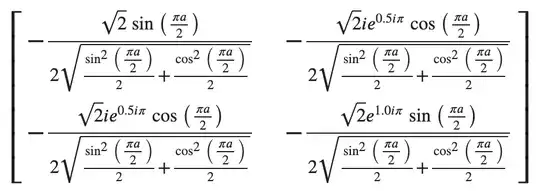For a very simple circuit, such as
from pytket.circuit import Circuit, fresh_symbol
a = fresh_symbol("a")
circ = Circuit(1)
circ.X(0)
circ.Ry(a,0)
the circuit that results from applying a SquashTK1 pass:
from pytket import passes
passes.SquashTk1().apply(circ)
has a very complicated expression for it's parameters:
$$ -2 \operatorname{atan}_2\left(-\frac{\sqrt{2} \cos \left(\frac{a}{2}\right)}{2},-\frac{\sqrt{2} \sin \left(\frac{a}{2}\right)}{2}\right). $$
In the end, this expression is the arctan of a tan and it may be used as a replacement of taking the modulus, but I wonder if anyone has any idea why this occurs.

